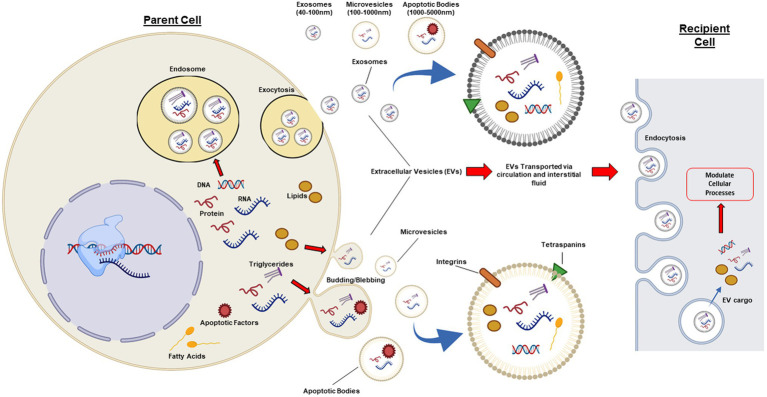Figure 1.
Cellular pathways involved in extracellular vesicle biogenesis. Extracellular vesicles (EVs) are a heterogeneous population of lipid bound vesicles that are released by the majority of mammalian cell types into the extracellular space and circulation. EVs consist of three main subtypes: exosomes (40–100 nm); microvesicles (100–1,000 nm); and apoptotic bodies (1,000–5,000 nm), which differ in their size, content, biogenesis, and release. Exosomes are generated and released via a pathway involving exocytosis, whereas microvesicles and apoptotic bodies are released via a budding/blebbing pathway. EV cargo includes nucleic acids, proteins, and lipids, which are highly regulated by the health status of the parent cell. Once in the extracellular space or circulation, EVs can target adjacent cells and peripheral tissues. EVs have common surface markers (tetraspanins: CD63, CD9, CD81, and CD82) and can have specific surface markers for cell targeting, such as integrins. EVs can elicit effects in recipient cells via cell receptor interactions or via absorption and release of biological cargo into the cytoplasm of the recipient cell. Figure created with BioRender.com.

